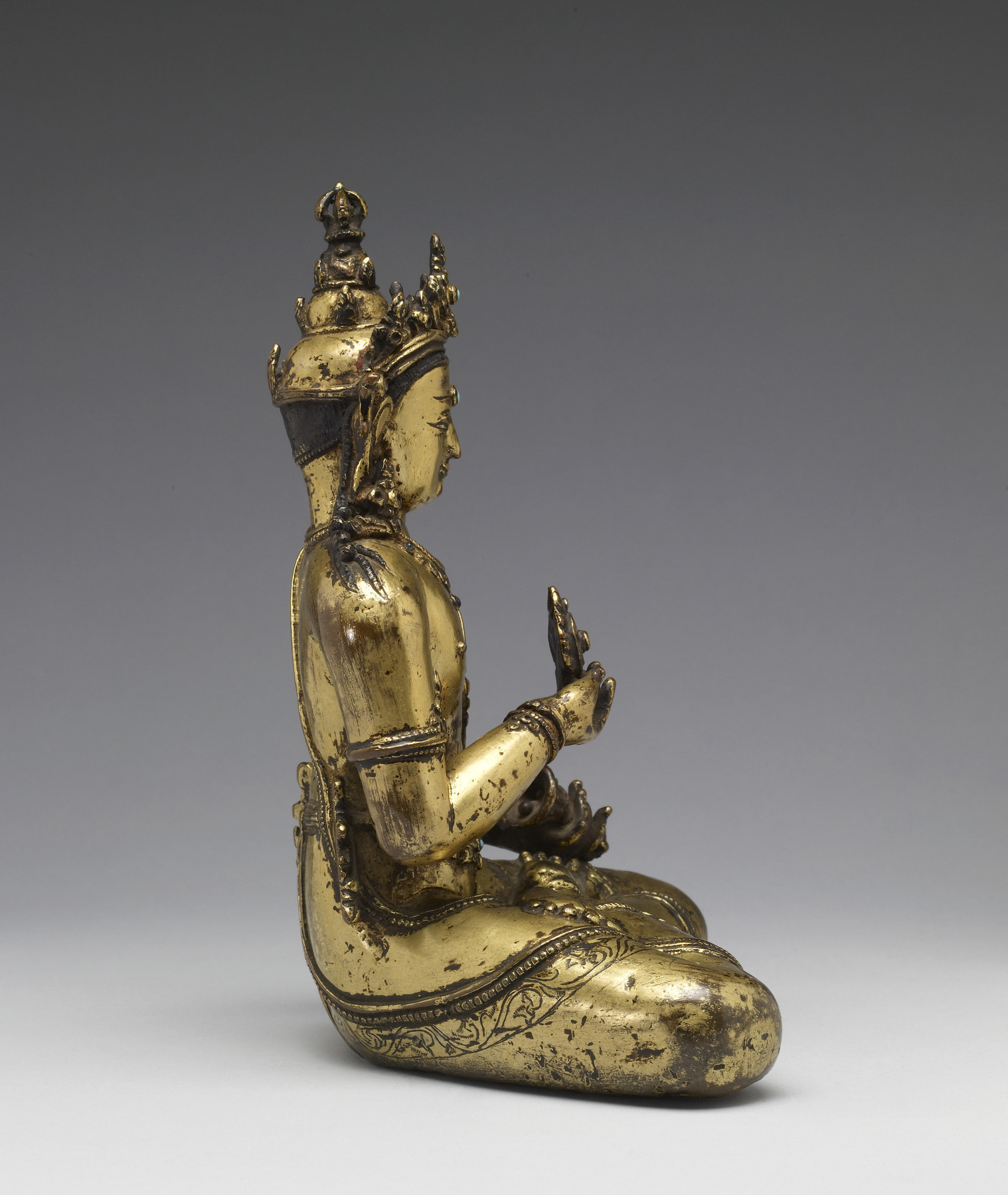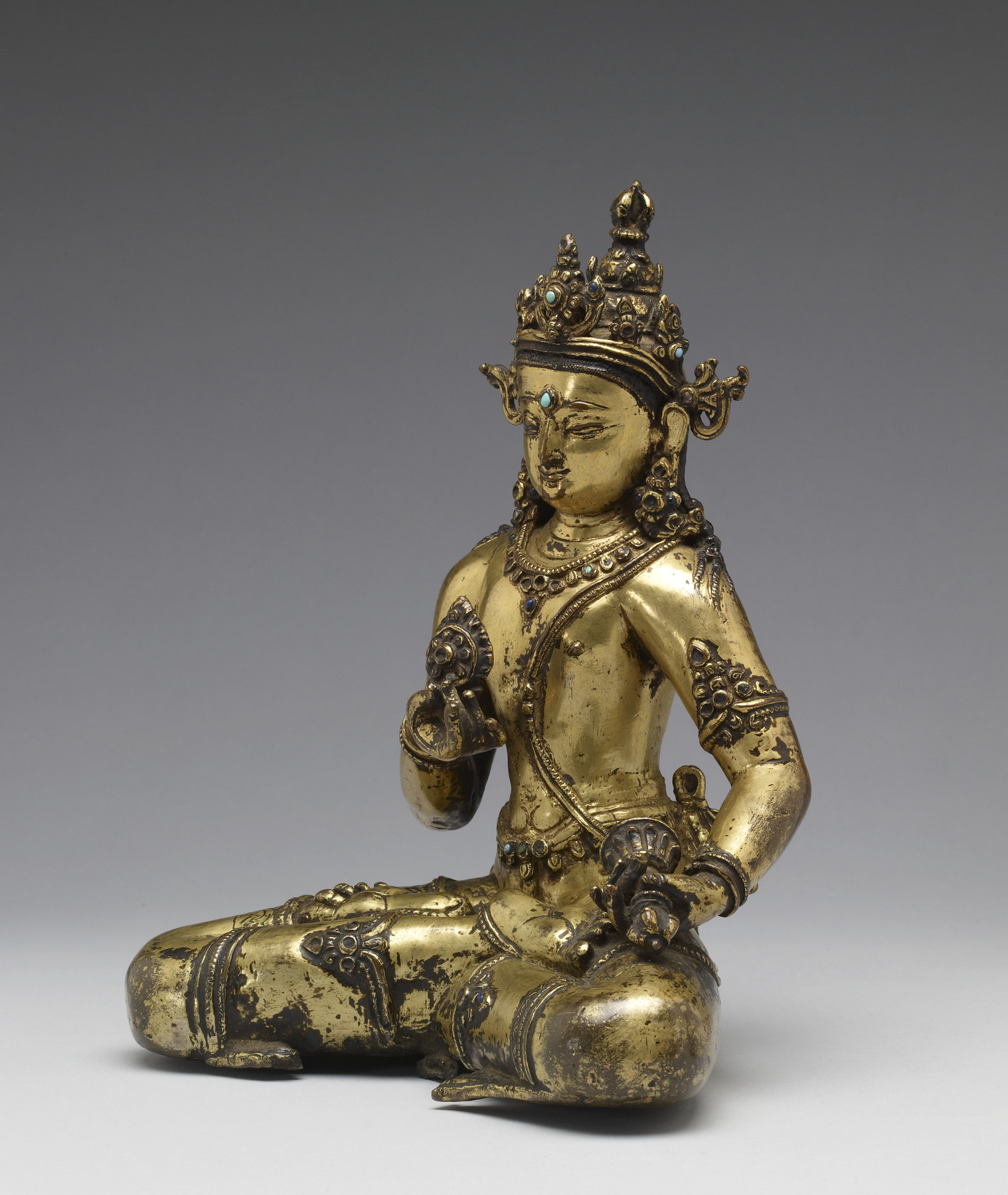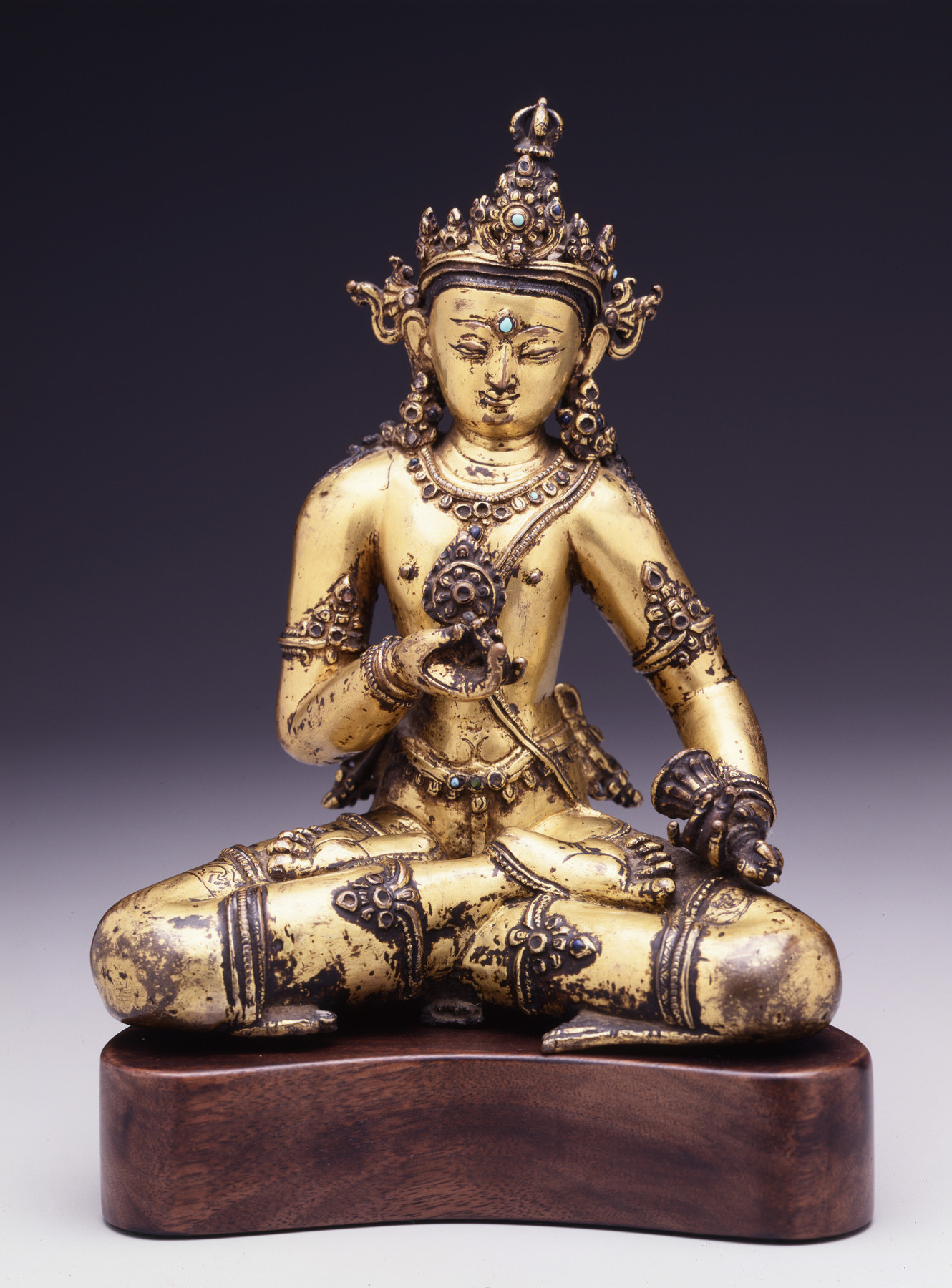Buddhist Deity
(India, Nepal, and Tibet)
This Buddhist deity holds a bell, symbolic of wisdom, and a flaming wheel, symbolic of the Buddhist teachings. His crown, which terminates in a "vajra"—the multipronged ritual scepter of the tantric Buddhist traditions—resembles the type of headdress worn by Nepali images of the deity Vajrasattva. Identified as both a primordial Buddha and a bodhisattva, Vajrasattva often plays a role in purification rituals. However, since Vajrasattva holds a vajra and bell, the identity of this wheel-bearing deity remains uncertain.
The seated deity is cast from almost pure copper, visible in areas where the thick gilding has worn away. The hollow figure is sealed with a small, rectangluar copper panel incised with the protective "vajra," or thunderbolt symbol, on its underside, and x-radiography reveals a hollow compartment that may hold sacred scrolls within.
Provenance
Provenance (from the French provenir, 'to come from/forth') is the chronology of the ownership, custody, or location of a historical object. Learn more about provenance at the Walters.
William H. Wolf, New York [date and mode of acquisition unknown]; purchased by John and Berthe Ford, Baltimore, 1972.
Exhibitions
| 2001-2003 | Desire and Devotion: Art from India, Nepal, and Tibet in the John and Berthe Ford Collection. The Walters Art Museum, Baltimore; Santa Barbara Museum of Art, Santa Barbara; Albuquerque Museum, Albuquerque; Birmingham Museum of Art, Birmingham; Hong Kong Museum of Art, Hong Kong. |
Geographies
Nepal (Place of Origin)
Measurements
H: 8 7/16 × W: 6 15/16 × D: 4 3/4 in. (21.4 × 17.6 × 12 cm); Base H: 1 9/16 × W: 6 15/16 × D: 4 15/16 in. (3.9 × 17.6 × 12.5 cm)
Credit Line
Promised gift of John and Berthe Ford
Accession Number
In libraries, galleries, museums, and archives, an accession number is a unique identifier assigned to each object in the collection.
In libraries, galleries, museums, and archives, an accession number is a unique identifier assigned to each object in the collection.
F.190
















